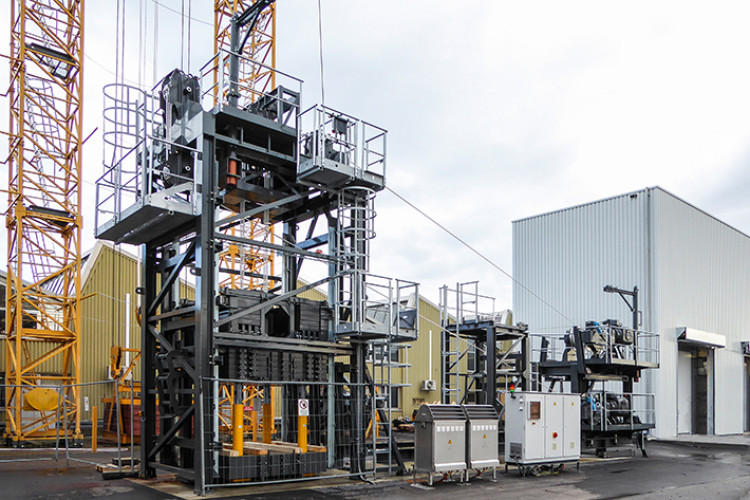A new tower crane series that will be launched in April next year will feature fibre rope, which Liebherr says offers a number of advantage over steel.
It has worked with Austrian rope manufacturer Teufelberger to develop the new high-tensile fibre rope for hoisting applications.
The ropes have completed a wide range of tests conducted by Liebherr, including field tests on tower cranes where their lighter weight provided particular benefits during assembly and disassembly.
During the development, more than 100 different fibre rope prototypes were produced. They underwent extensive testing on test benches specially developed for the project and in field tests conducted in five different countries.
The tests provided confirmation that the fibre rope not only weighs around one-fifth of a conventional steel rope, but also lasts four times as long and is significantly easier to handle. Operational safety is also guaranteed, said Liebherr – the different wear states are clearly identifiable.

Initially, there were various tests in classic rope bending machines. In addition, a crane rope test bench with a hoisting height of 42m was constructed. This enabled ropes with a thickness of up to 31mm to be tested with a test load of up to 45t rope drum with multiple rope turns. The tests for the 20mm ropes have already been completed.
Liebherr also built a climate chamber for this project in which the rope was subjected to a wide range of weather conditions. The chamber generated temperatures of up to 80° and as low as minus five. It also added sand or dust to the air to simulate site conditions in the desert; the next moment it generated monsoon-type rain.
Field tests for the high-tensile fibre rope developed by Liebherr and Teufelberger have been conducted on 11 tower cranes. High-tensile fibre ropes in various diameters have been undergoing the tests in Germany, Austria, France, Belgium and Switzerland since 2016. The benefits of the significantly lighter rope are particularly noticeable during the assembly and dismantling of the crane, said Liebherr. Fibre ropes can often be fitted on the crane by hand and without any auxiliary reeving winches. Re-reeving the hook block is also quicker and easier. The cleanliness and lack of maintenance required during operation received special praise as the rope does not require lubrication.
The high-tensile fibre rope has provided to be extremely wear-resistant and can withstand a high number of bending cycles. It has been shown to have four times the service life of a steel rope, which can reduce the number of rope changes.
The crane operator can identify when the rope requires changing. The end of the rope’s service life is primarily identified optically by the jacket on the rope undergoing defined wear shown by the colour, which clearly indicates when the rope must be changed. Furthermore, the fibre rope can withstand multiple notches without suffering immediate damage. The winding pattern of the new fibre rope is similar to that of a steel rope. If the lower layers have less tension than the upper ones, however, the new fibre rope is more tolerant. In the event of notching, it will free itself unlike steel ropes which generally become enmeshed.
Got a story? Email news@theconstructionindex.co.uk



